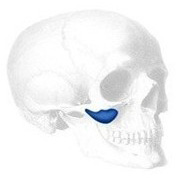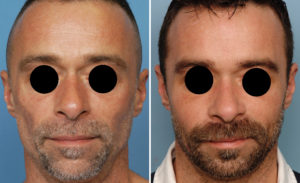Facial lipoatrophy is a not uncommon facial condition that all of us have seen but didn’t know exactly what to call it. Some people call it ‘gaunt looking’, others may refer to it as ‘hollowing’ of the face. No matter what you call it, it is the result of loss of the buccal (cheek) fat pad that lies directly under the cheekbone (zygoma) prominence. The fatty layer immediately underneath the skin throughout the fat thins as well but the dominant feature is the sunken or dented in area immediately beneath the cheek.
There are numerous causes of facial lipoatrophy but the most common are aging in an alreadly thin person, advanced cancer or immune disease with significant weight loss, and loss of the buccal fat pad due to medications. (such as in the HIV patient who is on antiviral medication) The facial appearance is classic with the loss of roundness in the middle part of the face and an actual indentation where th cheek fat used to be. This gaunt look creates an unfavorable appearance that appears old or unhealthy.
There are two distinctly different methods in plastic surgery to treat facial lipoatrophy and rebuilt this area up andout, either using injectable fillers (including fat) or a special type of cheek implant. Both obviously attempt to fill the cheek void left by the vacated fat pad but approach it differently. Injectable fillers replace it either with a viscous liquid component which may or may not be permanent. Most injectable fillers are not permanent. Inject fat could be permanent but is unpredictable. I have not been a big fan of the injectable fillers for the cheek deficiency of facial lipoatrophy simply due to the volume of the filler needed and the subsequent cost. It doesn’t take long before one can approximate the cost of a surgery. For a more assured result, albeit a surgical one but it provides the best value, is the use of a submalar cheek implant.


Dr. Barry Eppley
Indianapolis, Indiana


